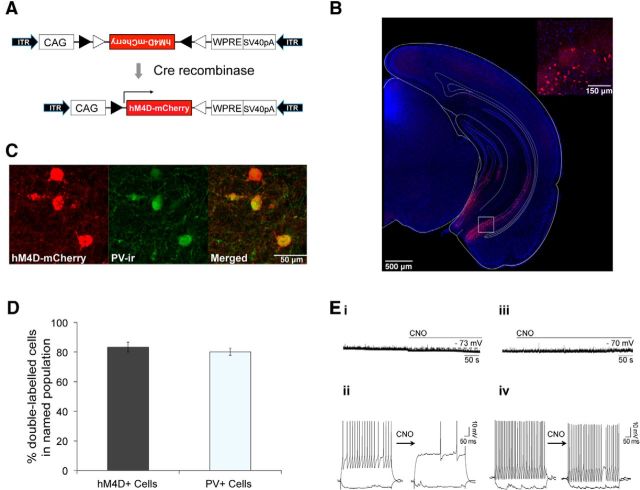Figure 1.
Inhibition of PV neurons in the vHPC using hM4D. A, Construct design for AAV-hsyn-FLEX-hM4D-mCherry. hM4D-mCherry sequences are inverted between two pairs of heterotypic, antiparallel loxP sites. In the presence of Cre recombinase, the sequences are inverted and thus transgene expression is activated. CAG, CMV enhancer/beta-globin chimeric promoter; WPRE, woodchuck hepatitis virus posttranscriptional regulatory element; ITR, inverted terminal repeat. B, Representative image of hM4D-mCherry expression in the vHPC of PV-Cre mice. Inset, High-magnification confocal image of boxed area. Red, hM4D-mCherry; blue, DAPI. C, Representative confocal image of immunostaining for PV in the ventral CA1 of PV-Cre mice expressing hM4D. Red, hM4D-mCherry; Green, PV-ir. D, Bar graph showing the percentage of double-labeled cells (hM4D+/PV+) within the total number of hM4D+ and PV+ cells in PV-Cre mice (n = 6). Data are presented as mean ± SEM. E, Representative voltage traces of CNO-induced hyperpolarization (i) and CNO-induced suppression of evoked action potential firing (ii) in hM4D-positive neurons (n = 8) and of no significant effects of CNO on hyperpolarization (iii) or evoked action potential firing (iv) in hM4D-negative neurons of PV-Cre mice.

